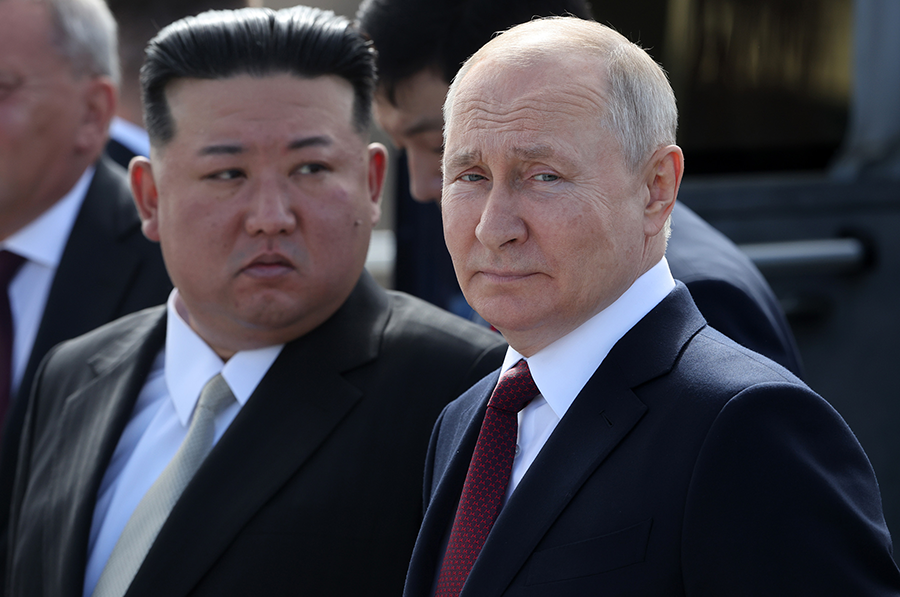“We continue to count on the valuable contributions of the Arms Control Association.”
Ukraine War Colors U.S. Concerns on Russia, North Korea
April 2024
By Xiaodon Liang
The U.S. intelligence community remains concerned that Russian President Vladimir Putin could resort to the use of nuclear weapons in Ukraine in response to Russia’s failure to achieve decisive battlefield successes, Director of National Intelligence Avril Haines told the Senate Select Committee on Intelligence on March 11.
 After Putin made several veiled nuclear threats in the spring and fall of 2022, U.S. intelligence officials made public an assessment that senior Russian officials had discussed the use of tactical nuclear weapons in Ukraine that year. (See ACT, December 2022.)
After Putin made several veiled nuclear threats in the spring and fall of 2022, U.S. intelligence officials made public an assessment that senior Russian officials had discussed the use of tactical nuclear weapons in Ukraine that year. (See ACT, December 2022.)
Haines, presenting the 2024 edition of the worldwide threat assessment report, also said that the intelligence community worries that Russia will put at risk long-standing norms against the use of “asymmetric or strategically destabilizing weapons, including in space and the cyber domain.”
In February, U.S. officials accused Russia of developing a new anti-satellite (ASAT) weapons system that would violate the Outer Space Treaty. (See ACT, March 2024.) The accusation of a treaty violation strongly implies that the new ASAT system would carry a nuclear warhead in orbit.
The report said that Russian capabilities in space would remain competitive with those of the United States despite the imposition of sanctions on the Russian space industry in response to the invasion of Ukraine. In contrast, last year’s report speculated that sanctions, in concert with resource constraints and sectoral difficulties, might imperil Russia’s long-term space goals.
The intelligence community assesses that North Korea, having supplied Russia beginning last year with conventional arms and munitions to bolster the war effort in Ukraine (see ACT, November 2023), is probably seeking to leverage this assistance to secure acceptance as a nuclear power. Speaking to this concern, Haines said that Russia’s reliance on its few allies may lead to weakening of “long-held nonproliferation norms.” North Korea’s shipment of military goods to Russia constitutes a violation of UN Security Council sanctions prohibiting exports of arms from North Korea.
Although the threat assessment did not include new information on Chinese strategic systems, it did eliminate a finding present in last year’s report that China was not interested in agreements that could restrict its strategic forces. This comes after a November summit between U.S. President Joe Biden and Chinese President Xi Jinping, two subsequent military-to-military meetings over the winter, and a January meeting in Bangkok between U.S. National Security Advisor Jake Sullivan and Chinese Foreign Minister Wang Yi. (See ACT, March 2024.)
In its assessment of Iran’s nuclear program, the report said the intelligence community found that the country is not currently performing key weapons-related activities.
In a shift from last year’s threat assessment, the report placed special emphasis on chemical and biological threats.
It highlighted the growing risk of states using chemical weapons against their own general population and individual critics. In addition to outlining the threat posed by actors employing dual-use biotechnologies to design new pathogens and toxins, the report noted the success that China and Russia have had in undermining public trust in countermeasures.
